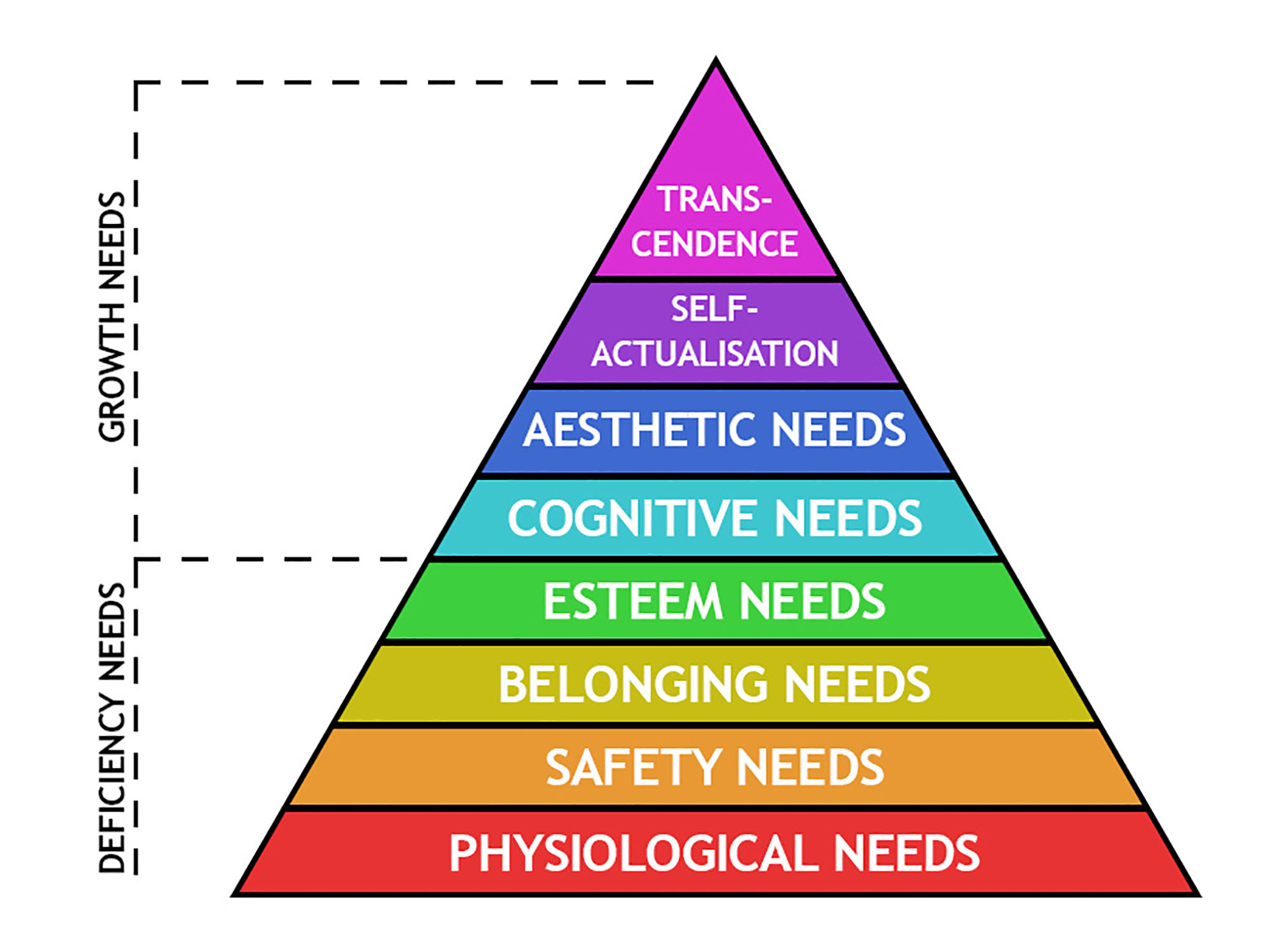What Are Maslow’s Hierarchy of Needs?
.jpg)
Developed in the late 1940s by American psychologist Abraham Maslow, the hierarchy of needs outlines a range of human needs that fuel personal growth and motivation.
After spending time with and studying the Native American Blackfeet tribe, Maslow developed his renowned theory, which focuses on a series of "deficiency" and "growth" factors that individuals must address to thrive. In this article, we'll explore the needs outlined by Maslow and how they fit into his hierarchy.
Maslow’s hierarchy of needs is worth reading along side Belbin's team roles, Myers Briggs personality test and Tajfel social identity theory.
What is Maslow's Hierarchy of Needs?
In simple terms, Maslow's Hierarchy of Needs is a theory that explains human motivation and behaviour. It suggests that human needs can be organised into a hierarchical structure, where lower-level needs must be met before higher-level ones can be pursued.
In the workplace context, Maslow's Hierarchy of Needs helps us understand what drives employees. For instance, those struggling to meet basic physiological needs, like having enough food or a safe place to live, are likely to be less motivated than those whose needs are satisfied.
By grasping this hierarchy, employers can design policies and practices that address the diverse needs of their workforce. Providing fair compensation, ensuring safe working conditions, and offering opportunities for social interaction and recognition can help meet employees' basic needs and boost their motivation and engagement at work.
The Principle of Maslow’s Hierarchy of Needs
Best visualised as a triangle, Maslow proposed that needs can be organised into stages, each with its own level of importance. Ranging from basic essentials to the pursuit of purpose and direction, he defined these needs as follows:

Physiological Needs
At the base of the hierarchy lie the most fundamental human needs essential for survival. These basic requirements must be fulfilled and maintained to sustain life. They include:
- Air
- Food
- Water
- Sleep
- Clothing
- Shelter
Safety Needs
Once the most basic needs are met, the next priority according to Maslow's Hierarchy is safety. This encompasses protection from danger as well as stability in health and financial security. Recognising these factors is crucial, and they include:
- Health
- Personal Security
- Emotional Security
- Financial Security
Love & Social Belonging
The third stage in the hierarchy is all about the need for belongingness. This encompasses personal relationships at home and social connections, highlighting the importance of feeling involved and accepted as part of a group. Key factors that contribute to this sense of belonging include:
- Family
- Friendship
- Intimacy
- Trust
- Acceptance
- Love & Affection
Esteem Needs
This stage revolves around the need for self-respect and the respect of others, often split into "higher" and "lower" needs. Higher esteem needs encompass qualities like independence and confidence, while lower needs might involve factors such as fame and prestige.
Cognitive Needs
Once esteem has been achieved, the next logical step in Maslow's hierarchy is the pursuit of curiosity, foresight, and creativity, alongside a quest for meaning. This stage is often referred to as the "thirst for knowledge," highlighting our desire to learn and understand more about the world around us.
Aesthetic Needs
Before achieving the vital stage of self-actualisation, Maslow's theory suggests that individuals must engage with and be surrounded by aesthetically pleasing experiences. This includes enhancing one's appearance or cultivating a deeper appreciation for beauty in the world around us. These aesthetic needs are considered a crucial step in Maslow’s Hierarchy of Needs.
Self-Actualisation
In simple terms, self-actualisation is about realising your full potential in life. Whether it's supporting others or chasing personal goals, this stage can only be achieved after fulfilling the needs at every previous level. This might include activities like pursuing creative passions, seeking personal growth, or striving to make a meaningful impact in the world:
- Partner Acquisition
- Parenting
- Developing Skills & Talents
- Achieving Lifelong Goals
Transcendence Needs
The pinnacle of Maslow’s hierarchy is the quest for spirituality and a higher purpose in life. Often referred to as altruism, this stage is described by Maslow as “the highest level of human consciousness.” Here, individuals strive to connect with something greater than themselves, seeking meaning and fulfillment through acts of kindness and contributions to the well-being of others.
Criticism of Maslow’s Theory
While it is now widely accepted that humans have universal needs that must be met, many in academia have critiqued how Maslow’s theory categorises these needs. For instance, it is argued that the hierarchical structure itself is not universal, as different needs and desires can vary depending on society and culture. Another common criticism is that Maslow based his theory on a limited sample of the top 1% of college students.
In today’s world, we recognise that human beings require a complex set of needs to achieve and succeed, both in the workplace and in life more broadly. Maslow’s theory, for example, does not account for mental health and the barriers it can create for otherwise 'healthy' individuals, which we now know has a significant impact on people, society, and the workplace.
Understanding the importance of fulfilling your team’s needs is key to success. Discover our exciting range of UK team building events designed to enhance collaboration and meet those essential social and esteem needs
Need More Ideas?
